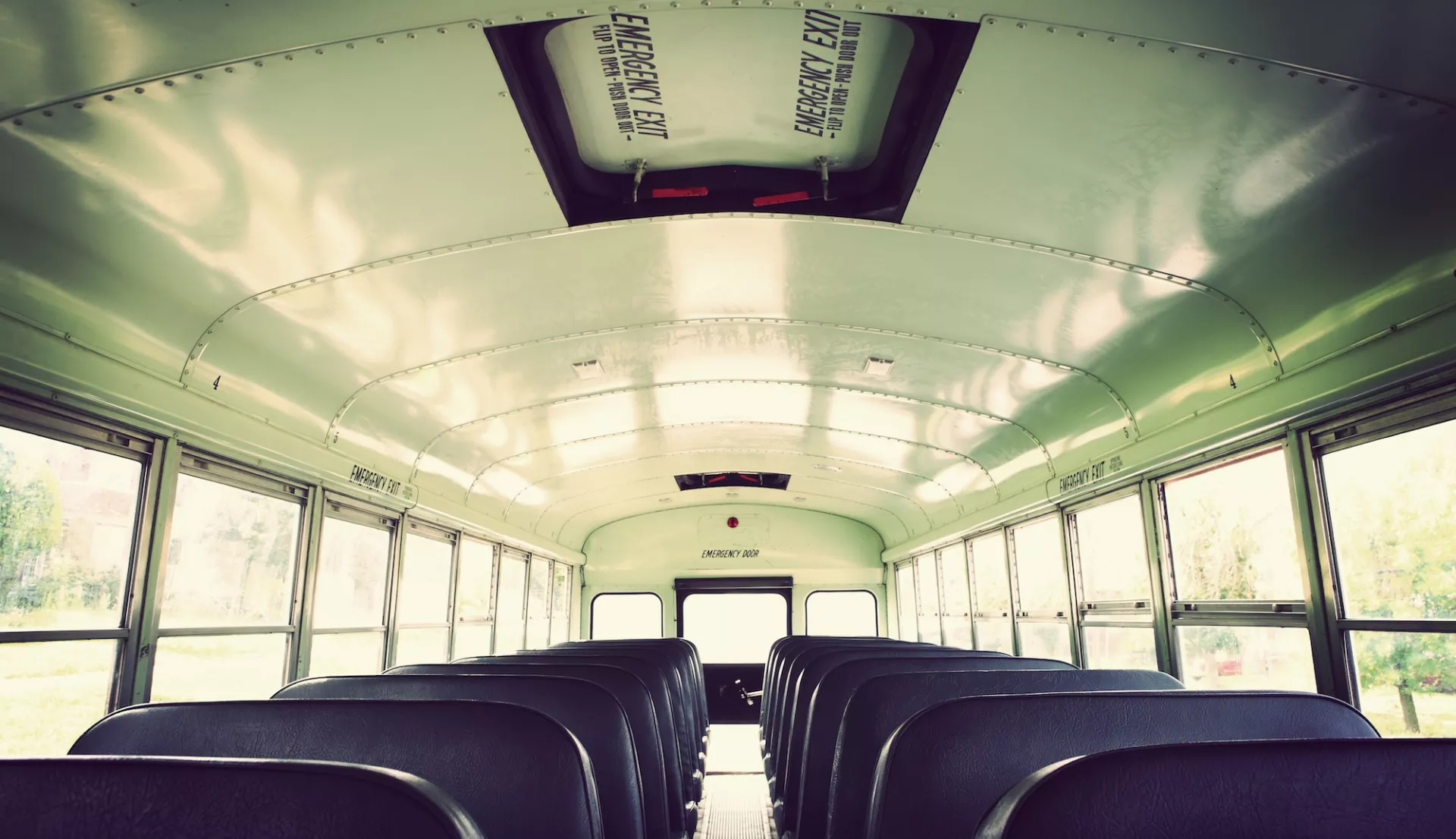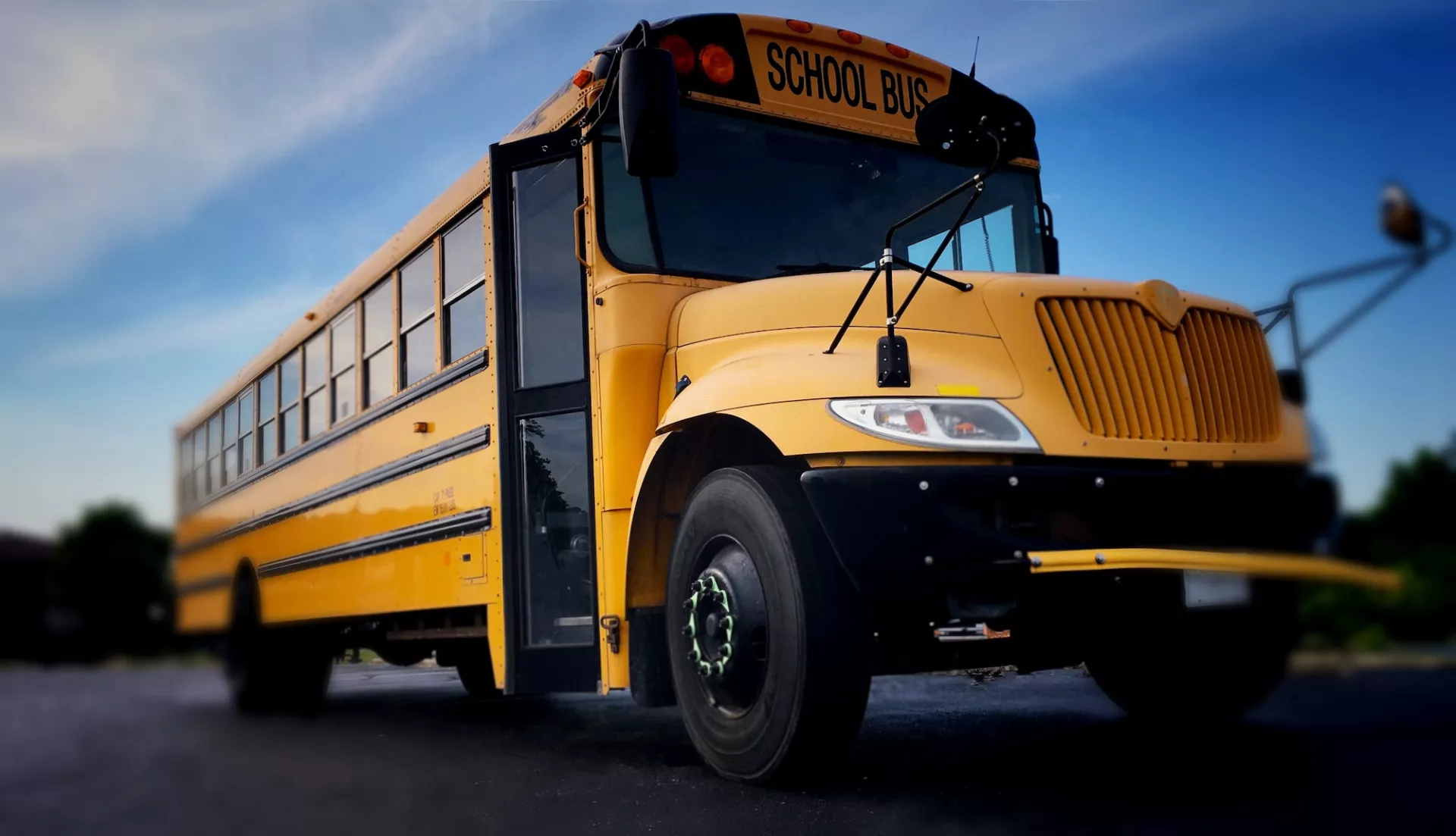Key Takeaways
- Most school buses have no ventilation system.
- Open windows let in air pollution, exhaust -- and bugs.
- Diesel fumes cause cancer and other harm, one reason for electric buses.
We want healthy air in schools. But what about school buses, where students and drivers spend so much time? How good is that air?
“The ventilation strategy is ‘Open the window and drive faster,’” says Chrissy Kosar, a long-time school bus driver. Now president of Gloucester County Education Association, she counted on the one beside her seat.
Most school buses on the road today—like the large ones Kosar drove—have no ventilation system at all. Smaller newer ones are more likely to have air conditioning, which only cools the air without cleaning it.
Open windows aren’t always possible.
“You tend to leave the windows up for the little ones, but it’s not a healthy environment for students or drivers,” Kosar explains. Open windows let in bugs, leading to screams and then closed windows. They also let in the rain and polluted air, including diesel exhaust.
There are other “bugs” in school bus air—including the virus behind COVID-19.
“If you’re just sitting there with no ventilation, no defroster running, with all the windows closed, that’s a bad situation,” says Mike Van Dyke, an associate professor and industrial hygienist at the Colorado School of Public Health’s Center for Health, Work & Environment.
School bus design regulations focus on death and harm in collisions. The pandemic has provided possibilities to talk about bus air quality. While most attention is on students, drivers’ health also matters.
“The younger ones in school for the first time get every bug going, and so do the bus drivers,” Kosar says. “My first two or three years of driving a school bus, I think I was sick the whole time.”
Until the pandemic, no drivers wore masks or respirators. Instead, they counted on limited sick days and “getting used to” the viruses of the day.
Airborne hazards in a school bus also get pulled in through open windows. People around buses that are idling or stopped with the engine running also inhale their diesel fumes. Drivers also inhale fumes during mandatory daily (or more frequent) checks, from their own and other buses nearby at the same time.
Diesel fumes cause cancer and other harm, one reason for electric buses. They also contribute to air pollution. The most common small particles in air pollution (PM 2.5) —even at very low levels—are linked to cancers, diabetes, dementia and harm to multiple body systems.
What Helps?
Like other drivers, Kosar wants a bus with a ventilation system that protects drivers and passengers, one without “bugs” or other harmful particles in the air.
That requires retrofitting or new designs, after research to learn what really works. Long-term recommendations include real ventilation systems with high efficiency particulate absorbing (HEPA) filters that clean the air of viruses and other particles, and respirators (like N95s, not surgical masks) designed to fit children’s faces.
Ultraviolet light—which kills viruses—also can be installed in bus ventilation ducts if a system exists. The duct provides a covering to protect people from UV hazards. A 2005 study found a UV and electrostatic filter combination was 99% effective in removing particles and paid for itself in reduced system cleaning in just 18 months.
Those longer-term changes are expensive. But so are the consequences of sick kids and sick staff. Studies link diesel emissions alone to higher absenteeism rates, lower test scores, more asthma attacks, and worse respiratory illnesses among students. Bus drivers have not been studied.
Diesel retrofits are an immediate and relatively inexpensive fix with benefits. A recent study found that if all U.S. school buses had been replaced or had the retrofits, the EPA’s 2012–2017 School Bus Rebate Program would lead to more than 1.3 million more student days of attendance each year. Bus drivers would benefit too.
An Australian pilot study with public transit buses suggests another relatively inexpensive solution: several portable air purifiers (without ionization).
Immediate improvements are possible. A 2020 Colorado study found running dashboard fans and opening all school bus windows reduced particle counts by an average of 84% and the time particles remain airborne by 80%. Opening doors also helped improve fresh air.
Van Dyke was in another group of researchers looking for practical inexpensive solutions in the pandemic. They found hatches are key in larger school buses.
“The biggest increase in ventilation that we saw was really opening the hatches while the bus was moving,” Van Dyke says. “It makes sense, you’re sucking air out of the bus.”
They got a surprising very high 12 air changes an hour combining the defrost fan (fresh setting) on high, middle and back hatches open with the fan on and six windows open 2 inches while the bus was moving.
Their other recommendation was to educate drivers about these measures.
When air pollution is present, Van Dyke suggests opening hatches only, not windows. (Air dilution increases further off the ground.) Like others, he also warns against “particle charging,” “hydroxyls” or “ionization” add-ons, which produce harmful by-products (e.g., ozone) and lack evidence about their claims.
The U.S. Environmental Protection Agency agrees. It is testing various methods to clean air in enclosed spaces like school buses. A researcher there says they see “filtration-based technologies are more effective than those that work to inactivate (or ‘kill’) virus without a capture mechanism, and electronic air cleaners can create harmful by-products.”
Dorothy Wigmore is a long-time health and safety specialist and WEC consultant. She has worked in Canada, the U.S. and Mozambique, focusing on prevention and worker participation to solve job-related hazards.





